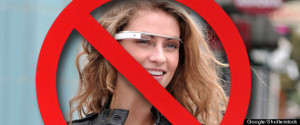Learning from the Smartphone Era | Building Consumer Glass Businesses
 I’ve been pretty pessimistic about the opportunities to build consumer Glass-native businesses. But let’s assume I’m wrong. What if there’re opportunities? What would they look like? What can we learn from the rise of smartphone apps to assess the opportunities for consumer Glass businesses?
I’ve been pretty pessimistic about the opportunities to build consumer Glass-native businesses. But let’s assume I’m wrong. What if there’re opportunities? What would they look like? What can we learn from the rise of smartphone apps to assess the opportunities for consumer Glass businesses?
With the exception of some games (e.g. Angry Birds), every successful consumer smartphone app has incorporated a substantial back-end, cloud component. FourSquare, Shazam, Evernote, Twitter, FaceBook, Instagram, etc. None of these apps existed as a stand-alone front-end, but rather as a portal to a potent back-end.
All of these apps took advantage of the unique traits of the marginal value of the smartphone. Smartphone apps leveraged these unique traits to deliver incredible new experiences that were never possible before.
So the question is: what new back-end services can Glass feed and receive data from? What can Glass do that smartphones can’t, and how will that additional / new data drive new back-end services?
Of the six unique characteristics of the marginal value of Google Glass, three drive data input / output: the camera, the head-tracking gyro, and the heads-up display.
One of the defining characteristics of product design is that reducing friction of a given feature/function drives usage of that feature/function. Glass dramatically lowers the friction to capture pictures and videos (and provides new 1st person opportunities). I expect to see a flood of services that try to take advantage of Glass’s ability to capture pictures and videos so effortlessly. It will be interesting to see if any new startups can compete against the industry giants in picture and video sharing: Instagram, Vine, FaceBook, and SnapChat.
Head-tracking provides interesting opportunities to deliver ads. Once Glass provides a larger, more interactive display, I expect to see enormous new opportunities in augmented reality and data overlays. But those aren’t quite feasible yet. Given Glass’s hardware constraints today, I don’t think we’ll see an enormous amount of innovation at the app layer that incorporates head-tracking. But that could change as hardware improves.
The heads-up display presents incredible opportunities for users to receive contextual content. Given that Google is an advertising company, this is the logical conclusion. Indeed, notion is the entire premise of the Mirror API. Although the Mirror API isn’t particularly robust, it expedites the development of push notification services on Glass. This service most certainly caters to existing content and volume platforms. It will be interesting to see what new apps developers can come up with to feed the beast so that they can deliver relevant notifications on Glass.
I’m still bearish on opportunities to build profitable Glass-focused consumer businesses. However, Glass and eyeware computers more broadly present incredible new opportunities for a wide variety of enterprise applications. That’s exactly why my company, Pristine, is building Glass apps for healthcare.








